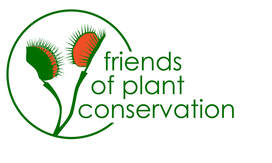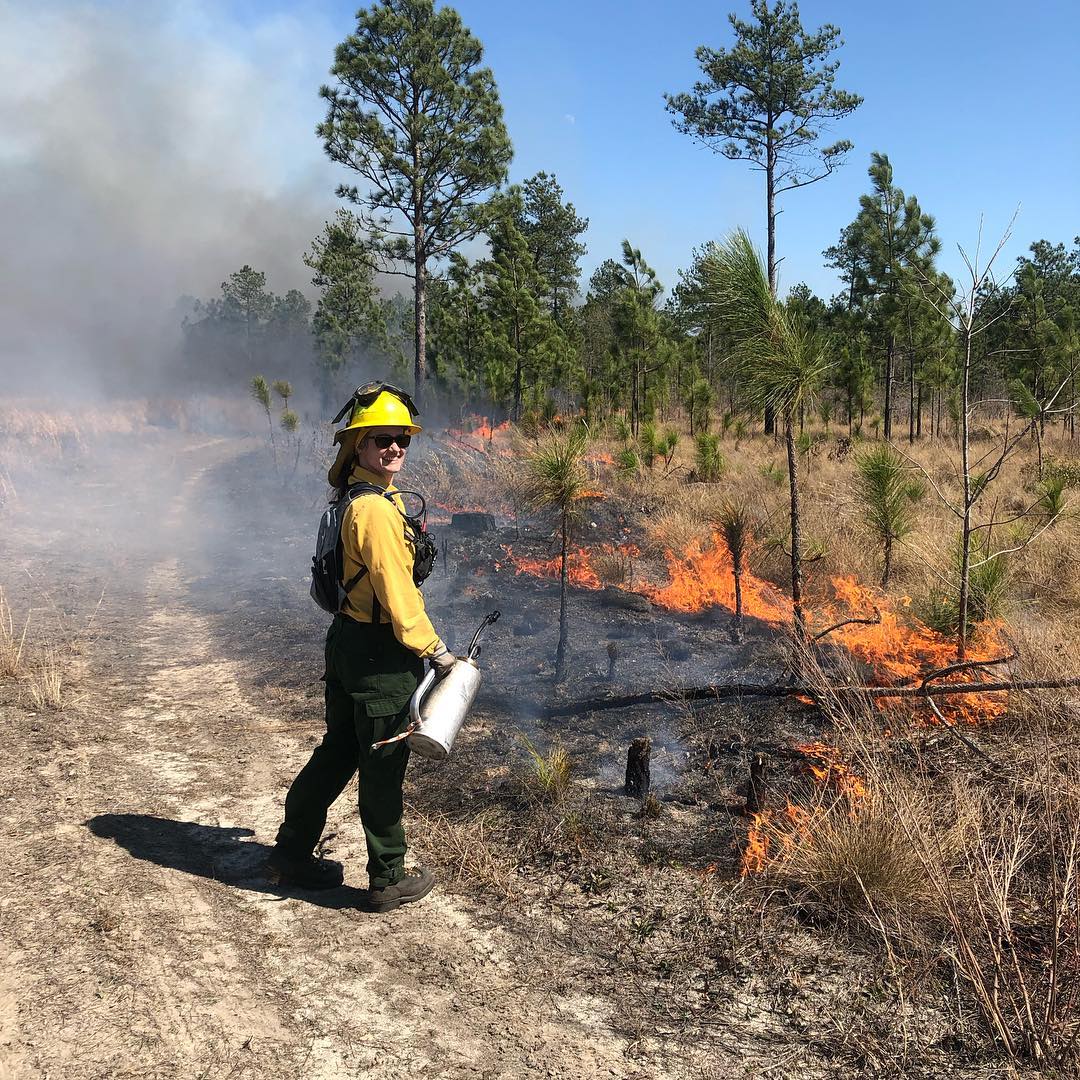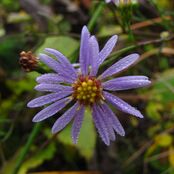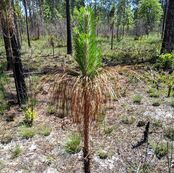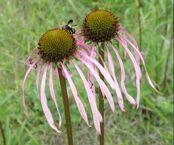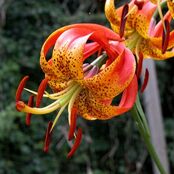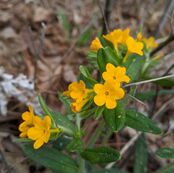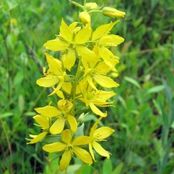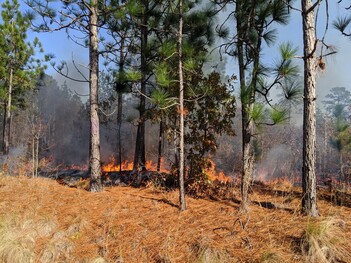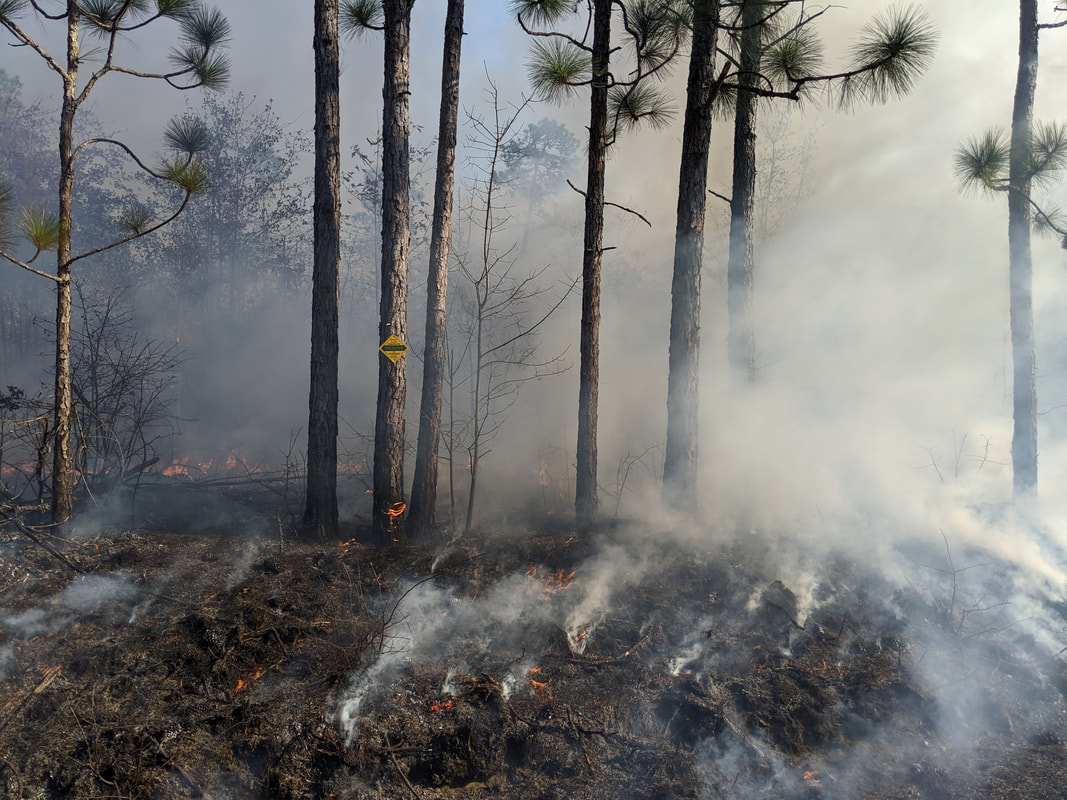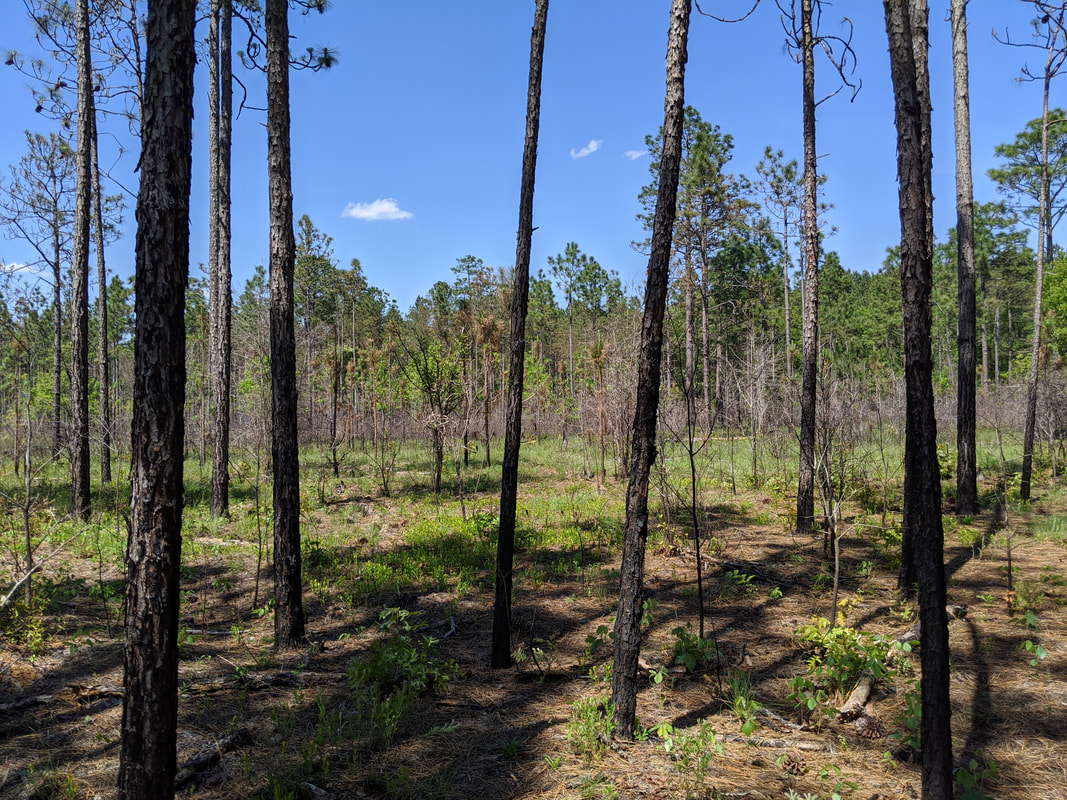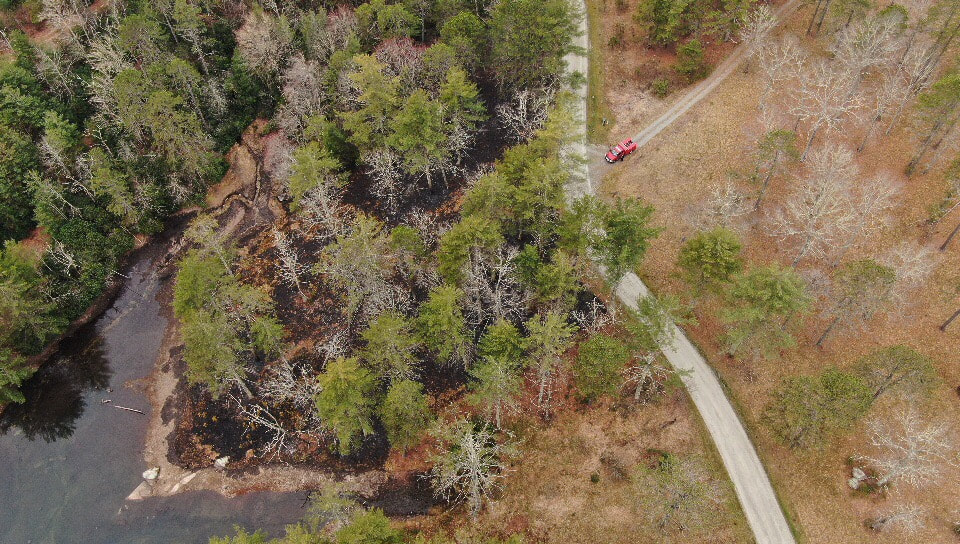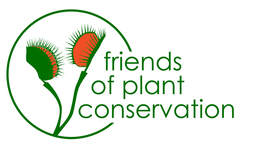Prescribed Burning
Prescribed burning is the skillful application of fire under select weather conditions in specified locations to accomplish explicit management goals.
Why is fire necessary?Fire is a natural disturbance process, necessary for the health and survival of some plants, animals, and ecosystems. Many natural areas of North Carolina have historic fire regimes. Species in these ecosystems have become fire adapted, meaning they are resistant to fire damage. Some even became fire dependent, meaning they require fire in order to regenerate. For example, cones of both Pond Pine and Table Mountain Pine release seeds after exposure to a high temperature only reached by fire. Interestingly, these two species grow on opposite sides of the state. Similarly, many wildflowers rely on fire for seed germination.
Prescribed burns benefit more than just fire adapted species. Other benefits include:
|
Highlights from Rx Fire on PCP Preserves
80% of the NCPCP Preserves need prescribed burns as part of their management.
30% of NC's protected plant species are threatened by fire suppression.
30% of NC's protected plant species are threatened by fire suppression.
|
A Few of NC's fire adapted plants:
|
Hebron Road Preserve: Efforts to restore the savanna/woodland habitats of this Piedmont preserve have involved several occasions of controlled burns. Numerous notable NC species have benefited from these practices: Smooth Coneflower (Echinacea laevigata), Narrow-leaf Aster (Symphyotrichum concinnum), and Erect Bindweed (Calystegia spithamea) are just a few.
Mineral Springs Barrens: After spring burns conducted in 2012, two imperiled species which were previously unsighted for many years, were rediscovered: the Thick-pod White Wild Indigo (Baptisia alba) and Georgia Aster (Symphyotrichum georgianum).
Boiling Springs Lake: The Boiling Springs Lake Preserve has been under regular fire management since at least 2004. This large preserve has burn units of variable sizes requiring as little as a few ground crew and up to multiple squads by air support with helicopter. This preserve is home to the Venus Flytrap (Dionaea muscipula) and Rough-leaf Loosestrife (Lysimachia asperulifolia), both of which depend on fire.
Cedar Mountain Bog: PCP has been conducting burns at this preserve since 2012. Not all mountain bog should have fire, however this site includes obvious indicators such as Pitch Pine (Pinus rigida) and Turkey Beard (Xerophyllum asphodeloides).
The ProcessMultiple steps are taken to ensure the success and safety of prescribed burns. Prescribed burns are implemented only by those with proper training, often members of the PCP Staff or additional personnel from the NC Forest Service.
|
References and Additional Resources
NC Forest Service - prescribed fire
Southern Blue Ridge Fire Learning Network
Southern Fire Exchange
"Using Fire to Improve Wildlife Habitat", NCSU Extension
Gray, Janet & Brownie, Cavell. (2003). Extinction, colonization, and persistence of rare vascular flora in the longleaf pine-wiregrass ecosystem: Responses to fire frequency and population size. Natural Areas Journal. 23. 210-219.
